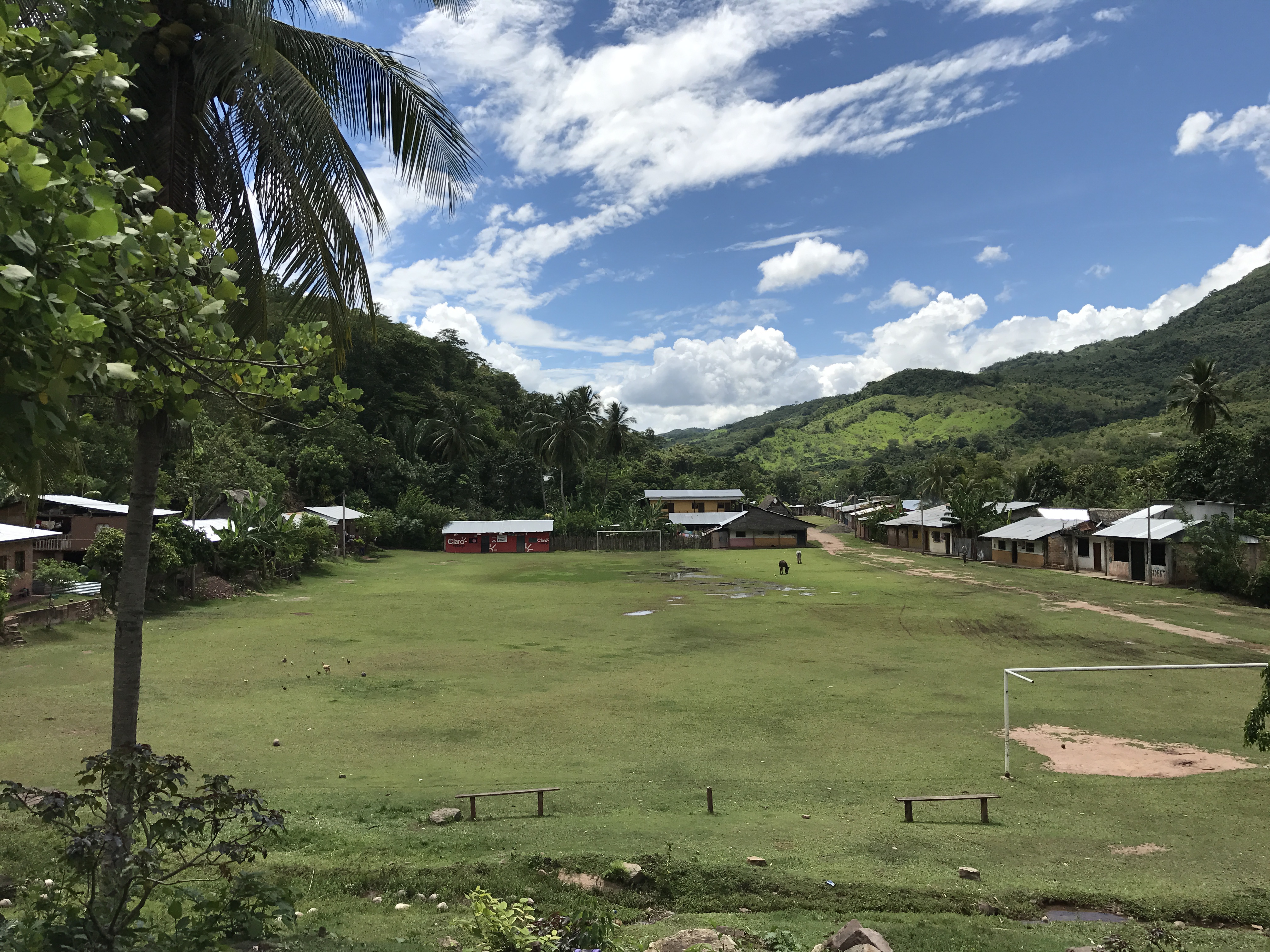San Martín
6.4434° S, 76.5622° W

The most thrilling urban/territorial experience I have ever undergone was my year in the heart of the Andean Amazon, in Peru’s San Martín Region, walking and resting in the waman samanas with mestizo and native Kichwa Lamas community leaders. We were working together on the Atlas Rio Mayo Project, striving to understand specific local notions of territory and landscape. Crossing the Mayo riverbanks, we were always surrounded by mountains, on the eastern side of the Andean range. In the heart of northern Peru, “urban” not only implies valley-devouring buildings, such as we see in Lima, defined by precise administrative limits and property lines; the word can also refer to a multi-situated physical configuration, connected by a system of paths and water trails organized along limits of maintenance and care between community members, through a constant collective modification of interconnected environments. The experience of walking through the riverbanks with Kichwa Lamas walkers showed me that multi-situated houses, orchards, forests, and water habitats are connected by time-shift technologies linked to an ecological history, a knowledge of multiple physical collaborations attuned to the unexpected circumstances and desires of being close to others, of shaping life with newcomers through temporary alliances.
The sun, the moon, the stars, the birds, and the trees are part of this everyday project centered on community, which always deals creatively with conflict and affection. The act itself of walking through the chacra-huerto culture became an intertwining of agriculture and architecture, in a way that dissolves the colonial-modern notions of “urban” and “rural.” The Amazon is no more the outskirts of a green void, flush with resources and empty of people, encircling the privileged urban centers of modern and progress consumption. The Amazon is, rather, a multiple, multicultural conservation project, undertaken by people in synchronicity, people that still believe in mutual support through cooperative tools, despite their differences and generational viewpoints. Within these micro-territories, with porous borders, questions about economy, education, policies, and planning collide, as well as issues regarding race, equity, gender, and identity, among others. What is relevant today is understanding that forests contain multiple cities and network communities—both local and migrant—brimming with new others.
This text has been excerpted from forA issue #1: Frictions. To read the full essay, and to see sections of the Mayo River drawn by Léon, purchase the journal here: https://birkhauser.com/books/9783035628517
Alexia León is a Peruvian architect, educator, and urbanist. She founded Lima-based leonmarcial arquitectos with Lucho Marcial in 2012. In 2021 the studio participated in the 17th International Architecture Exhibition—La Biennale de Venezia. She is co-curator, with Lucho Marcial, of the Peruvian pavilion at the 18th International Architecture Exhibition—La Biennale di Venezia. Her architectural and urbanism practice integrates her research on territory and landscape in the Andean Amazon, San Martín, Peru. The studio is itself an open platform that seeks ways to boost the design process through transversal conversations on structure, space, and materiality through prototype development, a process that analyzes not only the possibilities of what can be built, but also sparks the question of what can be built now, responsibly, and thinking of the common good.